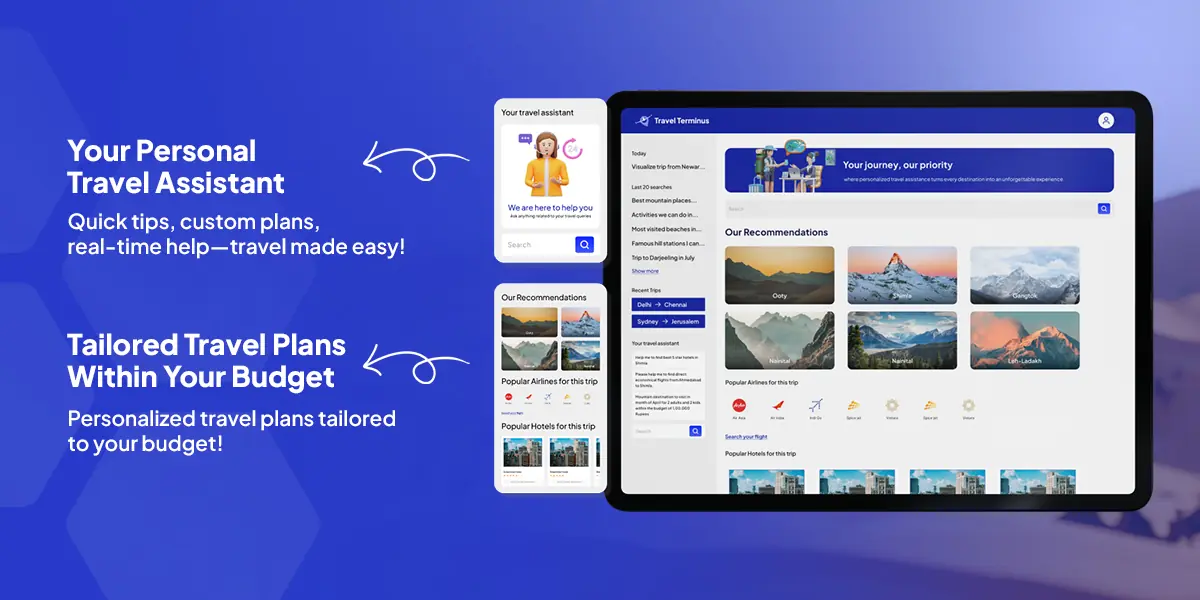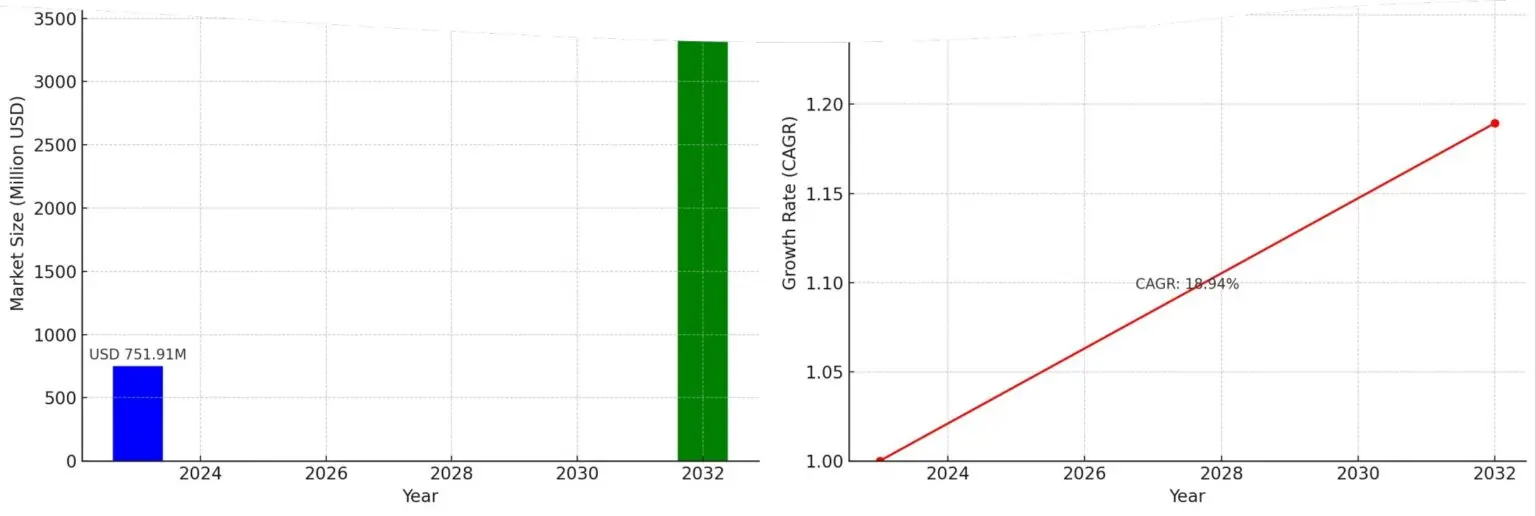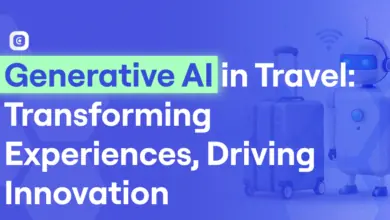Personalizing Your Itinerary with Gen AI

How we used LLM models that allow customers to book their itinerary in one go and reduce their booking timings.
Key Takeaways
- Reduce time spent on platform to book your tickets
- Don’t easily get carried away from promotions
- Help in finding and exploring other places within your budget
- One stop solution for your itinerary booking personalizing with yours past trips and stays.
The Challenge
Our client in the travel space wanted to have the disruption in the market using Artificial intelligence/Machine learning and we thought to implement the inclusivity in their product to make people’s life easier. They did the survey and found that people who are frequent travelers are having complains that they must use lot of filters and have to spend lot of time on the platform in order to book their itinerary that is leisure and cost effective.
As of now in travel tech industry from the technology standpoint there are no solutions available in the market who can give you personalization using natural language using travel assistant. Travel businesses are not prioritizing inclusivity such as Language (multilingual services), dietary needs as we can’t find any hotels where you can find if the property that you have booked serves vegan and whether the property that you are trying to book supports LGBTQ community and the list goes on.

Solutions
At OneClick IT Consultancy we tried few LLMs such as Llama model to train with our dataset that we are getting served from the different suppliers of flights such as Mystifly, Qunar, and PK Fare and for hotels such as TBO and Hotel Beds. Once the API of all the suppliers is integrated, we train the dataset along with the customers dataset that is stored in our database with their previous itinerary such as places they have traveled, property they have booked and in which month they have traveled, as our client can give some lucrative offer to their customers to increase the sales. Our client was pleased with the results as the time spent on the platform has been reduced significantly and booking has also been increased and with all these customer happiness indexes is also increased.
Process we follow
- Data Collection
- Clean, Prepare, and Manipulate Data
- Train the model
- Test model
- Improve the efficiency and accuracy of the model
- Revert the model if the results are not up to the mark after deploying to production
Technologies
- PyTorch Library
- Solr
- Spark
- Collaborative and Content based filtering for Personalized and Popularized respectively
- Llama LLM model
- AWS
Application Delivery
Using the travel assistant chatbot, users can now book the itinerary by spending less time on the travel platform getting all the required information about flights, hotels in one screen within the budget of the customers. After integrating with the supplier’s dataset and existing user data set, we train the model so that user can get the information that they are looking out at and by using the past information also suggest the places they can visit according to their flavor of visit.
Forecasting of AI in Travel Space

Ref – https://www.precedenceresearch.com/generative-ai-in-travel-market
Other AI ML Use Cases in Travel Tech That can be Implemented
Enhancing Customer Experience
- Sentiment Analysis – AI analyzes customer reviews and feedback to gauge satisfaction levels, helping travel companies improve their services.
- Customized Marketing Campaigns – ML-driven segmentation allows for targeted marketing efforts, sending personalized offers and promotions to the right audience.
Chatbots and Virtual Assistants
- 24/7 Customer Support: Al-powered chatbots assist customers with booking inquiries, itinerary changes, and travel advice, providing instant responses and reducing the load on human agents.
- Voice-Activated Assistants: Virtual assistants integrated with Al can help travelers with tasks like booking, checking flight status, or finding local attractions via voice commands.
Preventions
- Identity Verification: AI-based tools enhance security by verifying traveler identities during online check-ins or bookings.
Final Words
In the following, generative AI will be discussed in how it can apply to the problems of personalization, efficiency, and accessibility as one of the pioneers of traveling. In particular, OneClick IT Consultancy has been able to make impressive traction by deploying LLM models such as Llama to cut down the overall time spent by customers on platforms in terms of itinerary booking. Personalization, summarized information from multiple suppliers and the data of past users provide a model of consumer-oriented travel aiming to satisfy the preferences, budget, and requirements of the broadest number of users.
This implementation apart from enhancing customer satisfaction and loyalty serves another function of creating a groundwork for further developments. The use of AI technology will continue to advance, and in turn, strengthen the ability to further develop the advancement of customer interaction, and operations, as well as the introduction of new services in the travel industry for travel businesses. AI solutions provide the key to a more personal, inclusive and efficient travel experience catering for the needs and desires of all interested parties.


